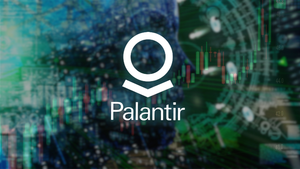
Belo Horizonte, Brazil – September 30, 2025 – Companhia Energetica De Minas Gerais (NYSE: CIG), often recognized as a notable penny stock, has unveiled its Q2 2025 earnings report, presenting a complex picture of robust strategic investments and operational growth alongside a dip in consolidated net profit. The report, released in mid-August 2025, indicates Cemig's continued commitment to infrastructure expansion and renewable energy, even as it grapples with market volatility and regulatory shifts. This performance carries significant implications for a company often eyed by investors for its affordability and potential, signaling both resilience and areas requiring keen attention.
The Brazilian utility giant's Q2 2025 results revealed an impressive 15% surge in adjusted EBITDA, reaching approximately R$ 2.2 billion (around $430 million USD), driven primarily by strong performance in its distribution segment. This operational strength was bolstered by an average tariff adjustment of 7.78% implemented in May 2025 and a substantial investment program. However, the consolidated net profit saw a notable decline of nearly 30% year-over-year, settling at R$ 1.19 billion. This divergence highlights the dual narrative of Cemig's quarter: strategic long-term plays are in motion, but short-term profitability faces headwinds from increased operational costs and a volatile energy trading segment.
A Quarter of Strategic Growth and Lingering Challenges
Companhia Energetica De Minas Gerais (NYSE: CIG) embarked on its most ambitious investment program to date, pouring R$ 2.7 billion into the first half of 2025. This capital was predominantly channeled into enhancing distribution and transmission networks across Minas Gerais, energizing nine new substations, and constructing over 2,600 kilometers of new low and medium voltage lines. These efforts underscore Cemig's dedication to modernizing its infrastructure and improving service reliability for its vast customer base. Furthermore, the company made significant strides in its renewable energy portfolio, advancing a new photovoltaic plant and reaffirming its commitment to 100% renewable sources. A successful participation in a GSF (Generation Scaling Factor) auction also secured concession extensions for three power plants, promising future revenue stability.
Despite these operational achievements, the quarter was not without its challenges. The 15.3% decline in consolidated EBITDA was largely attributed to increased operational costs and a negative impact of R$ 76 million from energy trading activities, reflecting the inherent volatility in this sector. Regulatory adjustments, particularly concerning loss calculations, also had a non-cash impact of R$ 199 million, posing ongoing risks to future earnings. The company also observed a 3.3% drop in the energy distribution market, though this was partially offset by a 20% year-over-year growth in distributed generation. The migration of industrial clients to the free market also presents a long-term threat to traditional revenue streams, necessitating strategic adaptations.
Market Implications: Winners and Losers in the Energy Sector
For Companhia Energetica De Minas Gerais (NYSE: CIG) itself, the Q2 2025 earnings report paints a mixed picture for investors, especially those drawn to its "penny stock" status. The strong adjusted EBITDA growth, significant investments, and a healthy net cash position of R$ 3 billion, coupled with a low leverage ratio of 1.59, signal operational strength and financial prudence. These factors could bolster investor confidence in Cemig's long-term growth trajectory and its ability to fund future initiatives, potentially making it an attractive option for value investors seeking exposure to the Brazilian energy market. Its undervalued status, as suggested by InvestingPro analysis with an attractive P/E ratio of 4.87, could lead to a positive re-evaluation by the market in the coming months, provided the company effectively addresses its profitability challenges.
However, the decline in consolidated net profit and the volatility in its energy trading segment could deter risk-averse investors and put pressure on its stock performance in the short term. The cautionary notes from analysts regarding potential regulatory changes eroding captive market advantages and leading to significant revenue declines and dividend cuts in 2027 could also weigh on long-term investor sentiment. Other utility companies in Brazil, particularly those with a stronger focus on regulated distribution and less exposure to volatile energy trading, might be perceived as more stable alternatives in the short run. Competitors who are also investing heavily in infrastructure and renewables, such as Eletrobras (BVMF:ELET3) or Engie Brasil Energia (BVMF:EGIE3), could see increased investor interest if Cemig's profitability issues persist, as investors seek more consistent returns within the sector.
Broader Significance: A Bellwether for Brazilian Utilities
Cemig's Q2 2025 performance is more than just a company-specific event; it serves as a bellwether for broader trends within the Brazilian utility sector. The substantial investments in distribution and transmission infrastructure align with a nationwide push to modernize aging grids, improve energy efficiency, and enhance resilience against climate-related disruptions. This trend is critical for a country with vast geographical challenges and a growing energy demand. Cemig's commitment to 100% renewable energy sources also mirrors a global and national shift towards decarbonization, indicating the increasing importance of ESG (Environmental, Social, and Governance) factors in corporate strategy and investor decisions.
The challenges faced in the energy trading segment and from regulatory changes highlight the inherent complexities and risks within the liberalizing Brazilian energy market. As more industrial clients migrate to the free market, traditional utilities face pressure to innovate and adapt their business models, potentially leading to increased competition and thinner margins in the captive market. Historically, similar shifts in other deregulated markets have led to periods of intense competition, consolidation, and a re-evaluation of utility valuations. Regulatory delays and the volatility of the Spot Price (PLD) remain persistent issues across the sector, impacting revenue predictability and investment planning for all players. Cemig's navigation of these headwinds offers valuable insights into how other Brazilian utilities might fare in an evolving market landscape.
The Road Ahead: Navigating Growth and Regulatory Uncertainty
Looking ahead, Companhia Energetica De Minas Gerais (NYSE: CIG) faces a dual imperative: continuing its aggressive investment program while simultaneously shoring up profitability and managing regulatory risks. In the short term, investors will be closely watching for signs of improved net income and stability in the energy trading segment. The company's comprehensive investment plan, totaling R$ 59 billion from 2019 to 2029, suggests a long-term vision focused on grid resilience and automation. Successful execution of these projects will be crucial for sustained growth and improved operational efficiency.
Long-term possibilities include further expansion into renewable energy projects and potential concession renewals for other power plants, which could secure future revenue streams. However, the looming threat of major regulatory changes by 2027, which could erode its captive market advantage and potentially lead to significant revenue declines and dividend cuts, requires strategic adaptation. Cemig may need to explore new revenue streams, enhance its competitive offerings in the free market, or diversify its business further to mitigate these risks. Market opportunities may emerge from the ongoing energy transition, particularly in distributed generation and smart grid technologies, while challenges will revolve around managing capital allocation efficiently and navigating an increasingly complex regulatory environment.
Comprehensive Wrap-up: A Penny Stock's Pivotal Juncture
Companhia Energetica De Minas Gerais' (NYSE: CIG) Q2 2025 earnings report encapsulates a pivotal moment for the Brazilian utility, showcasing a robust operational foundation and an ambitious investment strategy juxtaposed against short-term profitability concerns and regulatory uncertainties. Key takeaways include strong adjusted EBITDA growth driven by distribution, significant capital deployment into infrastructure and renewables, but also a notable dip in consolidated net profit and volatility in energy trading.
Moving forward, the market will be assessing Cemig's ability to translate its operational strengths and strategic investments into consistent bottom-line growth. The company's status as a "cheapest penny stock" adds another layer of scrutiny, as investors weigh its potential for substantial returns against the inherent risks of its market segment and the broader regulatory environment. Investors should closely monitor Cemig's upcoming earnings reports for signs of improved profitability, its progress on the extensive investment plan, and any developments regarding regulatory reforms that could impact its long-term financial health. The resilience and adaptability demonstrated by Cemig in the coming quarters will be crucial in determining its trajectory within the dynamic Brazilian energy market.
This content is intended for informational purposes only and is not financial advice







